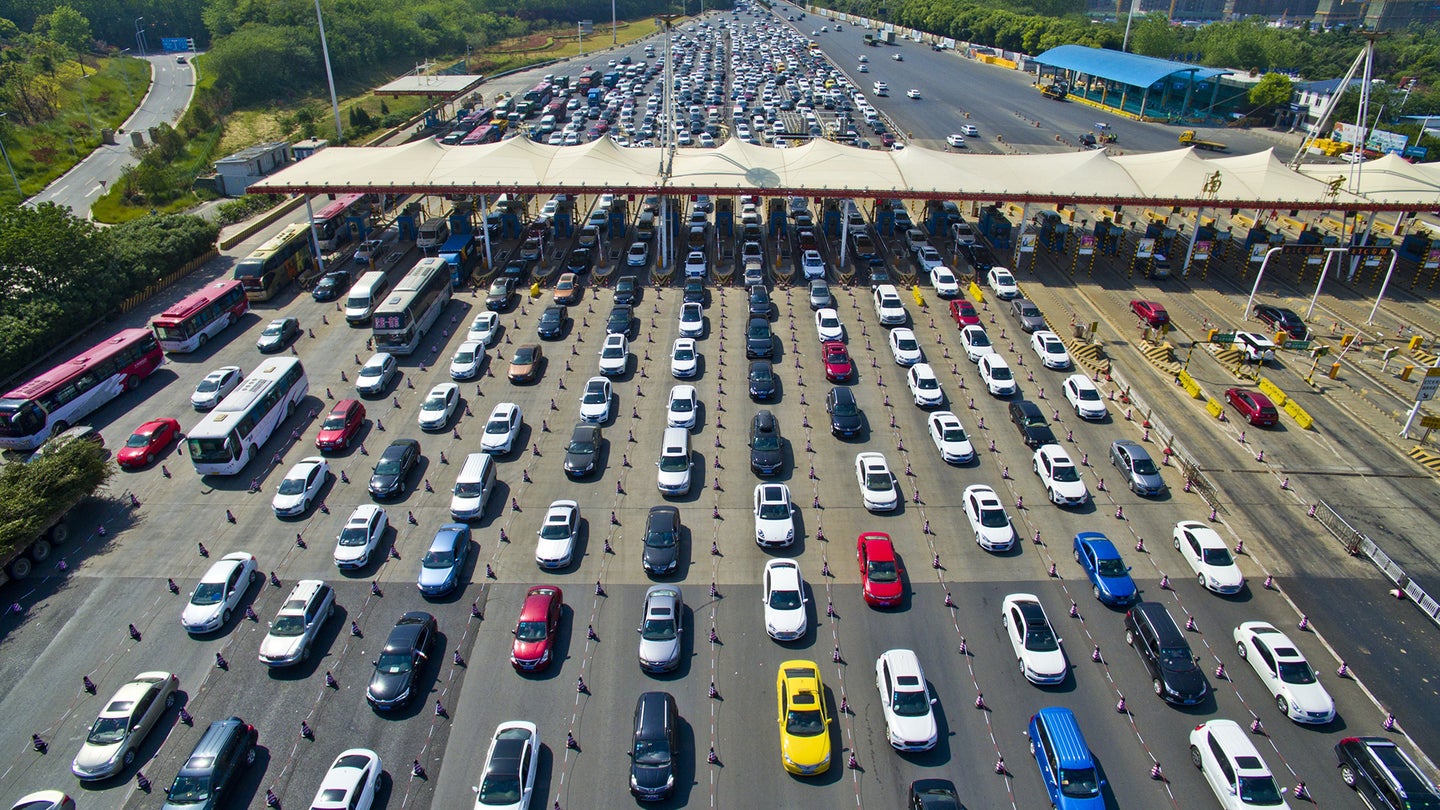Even Small Numbers of Self-Driving Cars Could Almost Eliminate Traffic Jams, Study Says
If just 5 percent of vehicles were automated, stop-and-go traffic could almost disappear, new research suggests.

If auto industry predictions are to be believed, self-driving cars will be available to public as soon as four years from now. But even if the technology lives up to the hype, it could take a long time for self-driving cars to replace a majority of human drivers. Until then, what kind of impact can a relatively small number of autonomous cars really have?
Quite a big one, according to researchers from the University of Illinois at Urbana-Champaign. A recent study found that automating just a small percentage of cars could dramatically improve traffic flow. That means society could start seeing an impact from self-driving cars pretty quickly, at least when it comes to traffic jams.
"Our experiments show that with as few as five percent of vehicles being automated and carefully controlled, we can eliminate stop-and-go waves caused by human driving behavior," Daniel B. Work, assistant professor at the University of Illinois at Urbana-Champaign and leader researcher on the study, told Phys.org.
That conclusion was reached after testing in Tucson, Arizona, in which an autonomous car circled a track continuously with at least 20 human-driven cars. Researchers found that by controlling the pace of the self-driving car, they could smooth out traffic flow. By reducing inconsistent stop-and-go driving, they also decreased the test fleet's fuel consumption by 40 percent.
It all comes down to the consistency of autonomous cars. Human drivers have trouble maintaining a consistent speed, and temporary reductions in speed can create a ripple effect. This leads to what researchers call "phantom traffic jams," forcing drivers to slow for essentially no reason. Self-driving cars will maintain a set speed fairly consistently until they have a specific reason to slow down or speed up.
Given that the only autonomous vehicles on public roads are prototypes, it may still be some time before this kind of effect is achieved. But researcher Benedetto Piccoli noted that technologies that are already available in production cars, like adaptive cruise control, could perform a similar function. So could vehicle-to-vehicle (V2V) communication systems, which allow cars to "talk" to each other and provide early warnings of difficult conditions to their drivers.
While a small number of self-driving cars could have an outsized benefit to traffic flow, there may still be other issues. Human drivers will have to get used to their presence, and a replacement will have to be found for the hand gestures and eye contact drivers currently use to communicate with each other. With so many unpredictable drivers still on the road, the reduction in crash rates touted by autonomous-car proponents may not happen until a large number of self-driving cars are on the road.
